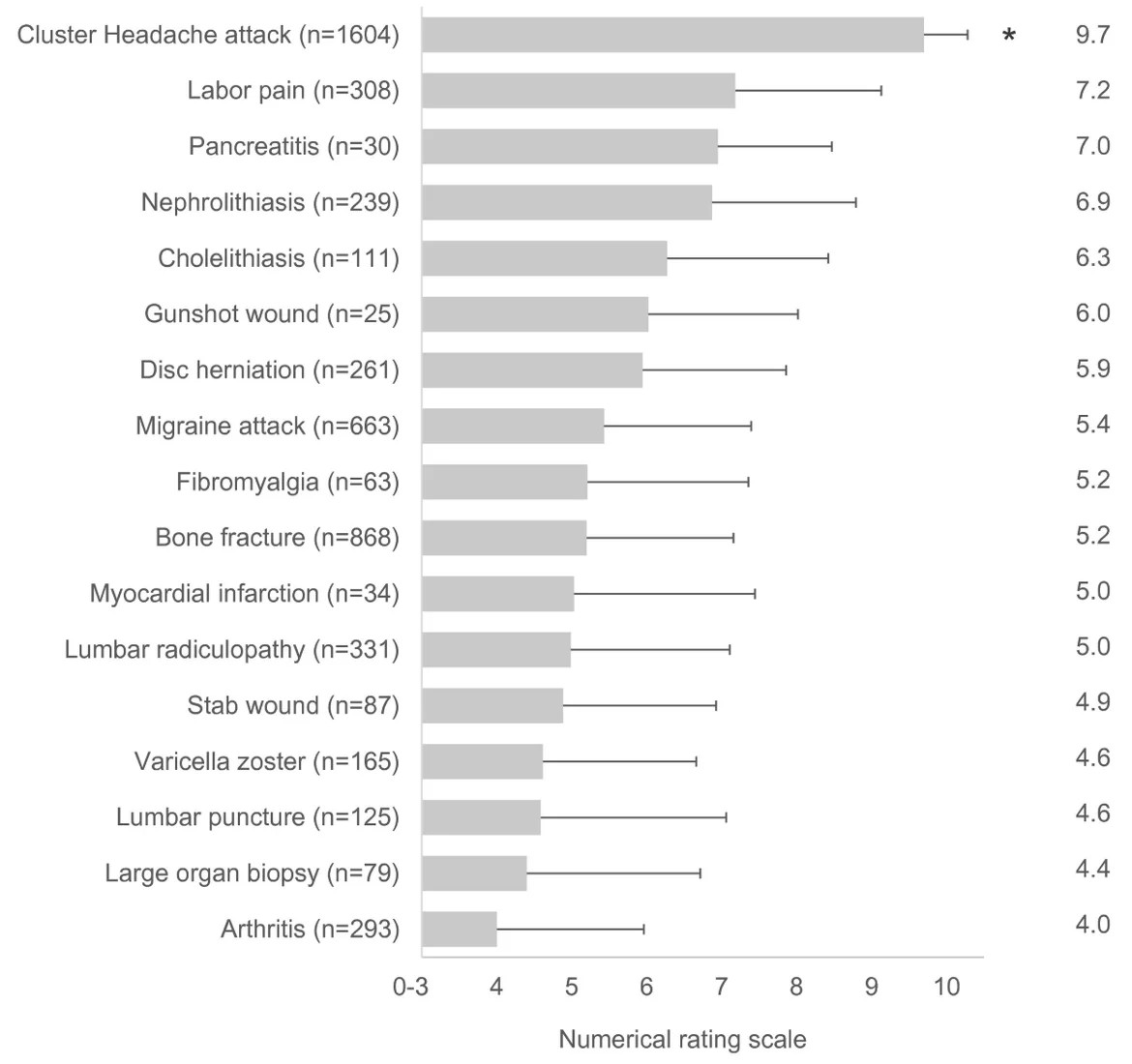
Background info
Bullet ant sting:
Pain level 4 is the highest level in the Schmidt sting pain index. Schmidt's original index rated only one such example, the sting of the bullet ant Paraponera clavata, as a 4. He wrote, "Paraponera clavata stings induced immediate, excruciating pain and numbness to pencil-point pressure, as well as trembling in the form of a totally uncontrollable urge to shake the affected part." In a later work, he described the sting as "pure, intense, brilliant pain...like walking over flaming charcoal with a three-inch nail embedded in your heel." The bullet ant's venom primarily contains poneratoxin, a paralyzing neurotoxic peptide.
https://en.m.wikipedia.org/wiki/Schmidt_sting_pain_index
Eating a Pepper X:
Pepper pungency is measured in Scoville heat units (SHU). This measurement is the highest dilution of a chili pepper extract at which heat can be detected by a taste panel.
[…]
Scoville heat units Examples
2,693,000 Pepper X
[...]
2,500–10,000 Jalapeño pepper
[...]
0 Bell pepper
https://en.m.wikipedia.org/wiki/Scoville_scale
Cluster headache:
I’m talking about cluster headache, the “most painful condition known to mankind” according to Dr. Caroline Ran of the Centre for Cluster Headache, a newly-founded research group at the Karolinska Institutet in Sweden.
[…]
The most compelling evidence for Dr. Ran’s quote above comes from a 2020 survey of cluster headache patients by Burish et al., which asked patients to rate cluster headache pain from 1–10 as well as other very painful conditions they themselves have had. Cluster headache attacks were rated as significantly more painful than other severely painful conditions:
CRPS / RSD:

https://forum.effectivealtruism.org/posts/8Sed33q54kdhZ4M9m/get-out-of-hell-free-necklace
The signs and symptoms of CRPS usually manifest near the injury site. The most common symptoms are extreme pain, including burning, stabbing, grinding, and throbbing. The pain is out of proportion to the severity of the initial injury. Moving or touching the limb is disproportionately painful (allodynia).
https://en.m.wikipedia.org/wiki/Complex_regional_pain_syndrome
Irukandji syndrome:
A friend pointed me to Irukandji syndrome. From the article:
The severity of the pain from an Irukandji jellyfish sting is apparent in the 2005 Discovery Channel documentary Killer Jellyfish[20] about Carukia barnesi, when two Australian researchers (Jamie Seymour and Teresa Carrette) are stung. Even under the "maximum dose of morphine", Teresa remarked she "wished she could rip her skin off", and is later seen writhing uncontrollably from the pain while lying on her hospital bed. [...] Jamie said he wished that he was stung by Chironex fleckeri, instead, since "the pain goes away in 20 minutes or you die".
On the television program Super Animal, a woman compared her pain from childbirth to her experience with Irukandji syndrome: "It's like when you're in labor, having a baby, and you've reached the peak of a contraction—that absolute peak—and you feel like you just can't do it anymore. That's the minimum that [Irukandji] pain is at, and it just builds from there."
https://reducing-suffering.org/on-the-seriousness-of-suffering/
@JussiVilleHeiskanen I know that's the case if you're being burned at the stake with a fire lit below you, but what about when you just get dowsed in flammable liquid and set on fire? I gather that is more widespread these days
Potential additional contenders I've just come across that I would add if polls allowed option adding:
Giant desert centipede bite
Trigeminal Neuralgia
